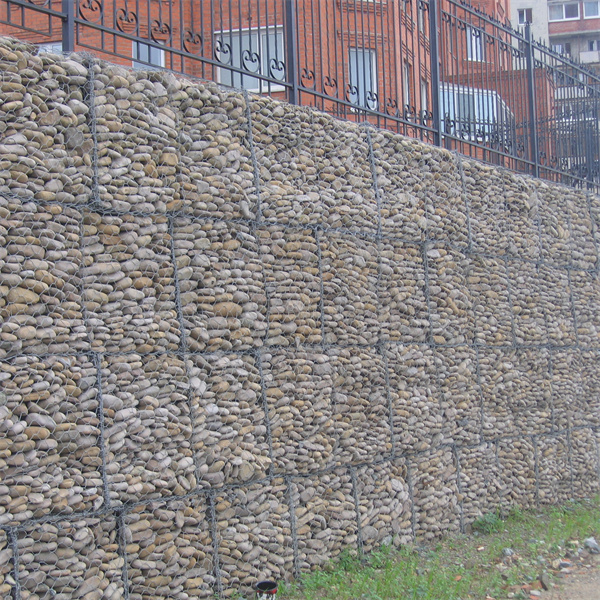नोभ . 11, 2024 05:11 Back to list
Effective Gabion Drainage Solutions for Sustainable Water Management Systems
Gabion Drainage An Innovative Solution for Erosion Control and Water Management
In the realm of civil engineering and environmental management, proper drainage is crucial for maintaining the integrity of landscapes and structures. One innovative solution that has gained attention in recent years is the use of gabions for drainage purposes. Gabions, which are essentially wire mesh cages filled with rocks or other materials, have been utilized for various applications, including erosion control, retaining walls, and even decorative landscaping. Their unique design and functionality lend themselves well to efficient water management systems.
Understanding Gabions
Gabions originated in the 19th century as a method to control riverbanks and prevent erosion. The term gabion comes from the Italian word gabbione, meaning large cage. Traditionally, these structures were constructed using woven willow branches or bamboo, but modern gabions are often made from steel mesh, which is coated to prevent rust and corrosion. They are filled with natural stone, concrete, or recycled materials, making them both durable and environmentally friendly.
How Gabion Drainage Works
The primary function of gabion structures in drainage systems is to manage surface water runoff and reduce soil erosion. When positioned strategically along slopes, in drainage ditches, or at the base of retaining walls, gabions can effectively slow down water flow, allowing it to percolate into the ground instead of rushing away. This infiltration helps to recharge groundwater supplies, mitigate flooding, and reduce the likelihood of erosion—a common problem in areas susceptible to heavy rainfall or rapid snowmelt.
Benefits of Using Gabions for Drainage
1. Erosion Control One of the most significant advantages of gabion drainage systems is their ability to control soil erosion. By stabilizing the soil and providing a physical barrier against fast-moving water, gabions help preserve the integrity of hillsides and riverbanks.
gabion drainage

2. Cost-Effective Gabions can be a more economical solution compared to traditional drainage systems. They require less maintenance, can be constructed using locally sourced materials, and often have a longer lifespan than other drainage solutions. This makes them particularly appealing for rural or undeveloped areas.
3. Environmental Benefits The use of natural stone and eco-friendly materials in gabions helps reduce the ecological footprint of drainage projects. These structures can also provide habitats for small animals and plant life, promoting biodiversity in the area.
4. Aesthetic Appeal Beyond their functional benefits, gabions can enhance the visual appeal of landscapes. Architects and landscape designers increasingly incorporate gabions into their projects, utilizing them as retaining walls or decorative features that harmonize with natural surroundings.
Installation and Maintenance
Installing gabions for drainage is a straightforward process that typically involves site preparation, placement of the gabion cages, and filling these structures with the chosen material. While installing gabions, it is crucial to ensure proper drainage flow to prevent water pooling, which could undermine their effectiveness.
Once installed, gabions require minimal upkeep. Regular checks are recommended to ensure that the wire mesh remains intact and that the fill material is not displaced. Plants can be introduced within and around gabions to enhance stability and provide additional erosion control.
Conclusion
Gabion drainage systems are a versatile and sustainable solution for managing water runoff and preventing erosion. Their practicality, cost-effectiveness, and environmental benefits make them an attractive choice for civil engineers, landscape designers, and property owners alike. As we continue to face challenges related to climate change and urban development, innovative solutions like gabions will play an essential role in creating resilient landscapes that can withstand the pressures of nature. Whether used in large-scale infrastructure projects or smaller residential applications, gabion drainage offers a path towards a more sustainable future.
-
Visualizing Gabion 3D Integration in Urban Landscapes with Rendering
NewsJul.23,2025
-
The Design and Sustainability of Gabion Wire Mesh Panels
NewsJul.23,2025
-
The Acoustic Performance of Gabion Sound Barriers in Urban Environments
NewsJul.23,2025
-
Mastering the Installation of Galvanized Gabion Structures
NewsJul.23,2025
-
Gabion Boxes: Pioneering Sustainable Infrastructure Across the Globe
NewsJul.23,2025
-
Custom PVC Coated Gabion Boxes for Aesthetic Excellence
NewsJul.23,2025
-
Installation Tips for Gabion Wire Baskets in Erosion Control Projects
NewsJul.21,2025






